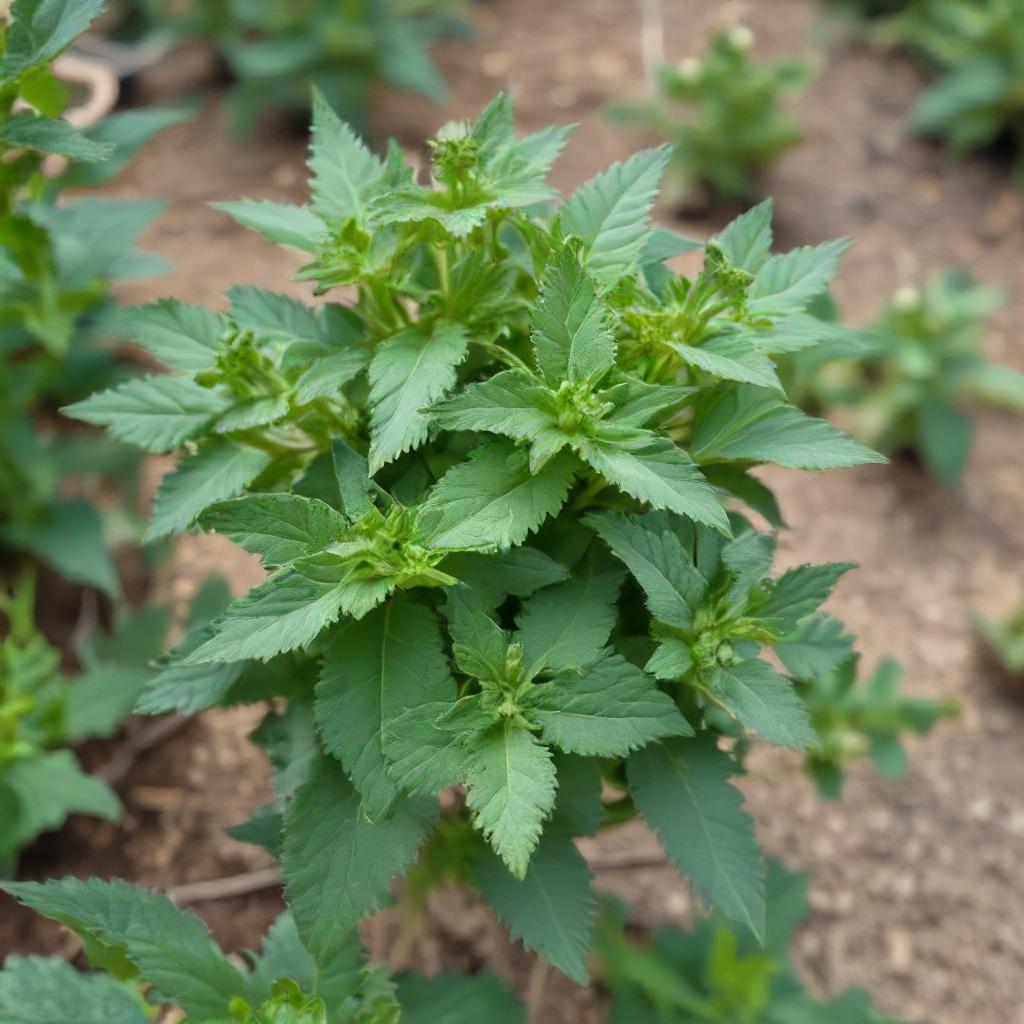- Hardiness Zone: 3-9 Perennial
Seed Depth: 1/8–1/4 inch
Seed Spacing: 12–18 inches
Row Spacing: 18–24 inches
Sunlight: Full sun to partial shade
Days to Sprout: 7–14 days
Days to Maturity: 70–90 days
Growth Habit: Upright, bushy perennial
Sunlight: Prefers full sun but tolerates partial shade, especially in hotter climates.
Soil Type: Thrives in well-drained soil with a pH of 6.0–7.5. Adding compost improves growth.
When to Plant: Start seeds indoors 6–8 weeks before the last frost or sow directly outdoors after the danger of frost has passed.
Direct Sowing: Plant seeds 1/8–1/4 inch deep, spacing them 12–18 inches apart. Thin seedlings to maintain proper spacing.
Indoor Sowing: Start seeds in trays or small pots and transplant when seedlings are 4–6 inches tall.
Succession Planting: Not necessary; catnip is a perennial that will regrow each year.
Watering: Water consistently but avoid overwatering; catnip tolerates some drought once established.
Fertilizing: Apply a balanced fertilizer or compost at planting to encourage healthy growth. Avoid over-fertilizing, which can reduce its aromatic potency.
Pruning: Prune regularly to promote bushy growth and prevent the plant from becoming leggy. Remove flower heads to extend the growing season.
Pest and Disease Control: Generally pest-resistant, but watch for aphids and spider mites. Use organic pest controls if necessary.
When to Harvest: Harvest leaves and stems once plants reach 6–8 inches tall. For optimal potency, harvest just before flowering.
How to Harvest: Use scissors or a knife to snip stems, leaving at least 2 inches of growth to encourage regrowth.
Seed Collection: Allow flowers to dry on the plant and collect seeds from the spent blooms.
Storing Seeds: Store seeds in an airtight container in a cool, dry place.
Why You’ll Love It
Catnip is a versatile heirloom herb from the mint family that’s beloved by both gardeners and feline friends. It grows quickly and reliably, producing fragrant, velvety leaves and delicate white to lavender blooms. Use it fresh or dried to make calming teas, potpourri, or enrichment toys for cats. Its flowers are a magnet for pollinators, and its strong scent makes it an excellent addition to herb borders or wildlife-friendly gardens.
Plant Characteristics
Height: 18–30 inches
Growth Habit: Upright and bushy with branching stems
Leaf Type: Soft, gray-green, heart-shaped leaves with a minty scent
Days to Maturity: 70–90 days
Hardiness: Perennial in zones 3–9
Flavor and Culinary Uses
Flavor: Minty and slightly bitter with a calming herbal aroma
Culinary Uses: Commonly used for herbal teas and infusions. While technically edible, it’s more often used for medicinal or aromatic purposes than culinary dishes.
Companion Planting Tips
Good Companions: Cabbage, beets, squash, and herbs like chamomile and lemon balm
Avoid Planting Near: Mint or other aggressive spreaders unless well-contained
Bonus Benefit: Naturally repels aphids, squash bugs, and flea beetles — great for pest control around the garden
Common Issues and Solutions
Aggressive Growth: Prune regularly or grow in containers to prevent spreading
Drooping or Wilting: Ensure well-drained soil and avoid overwatering
Cat Damage: If growing for herbal use, consider fencing or netting to protect from curious cats
Seeds Per Packet
| 250mg | Approximately 425 |
| 500mg | Approximately 850 |
| 1g | Approximately 1,700 |
| 2g | Approximately 3,400 |
Why You’ll Love It
Catnip is a versatile heirloom herb from the mint family that’s beloved by both gardeners and feline friends. It grows quickly and reliably, producing fragrant, velvety leaves and delicate white to lavender blooms. Use it fresh or dried to make calming teas, potpourri, or enrichment toys for cats. Its flowers are a magnet for pollinators, and its strong scent makes it an excellent addition to herb borders or wildlife-friendly gardens.
Plant Characteristics
Height: 18–30 inches
Growth Habit: Upright and bushy with branching stems
Leaf Type: Soft, gray-green, heart-shaped leaves with a minty scent
Days to Maturity: 70–90 days
Hardiness: Perennial in zones 3–9
Flavor and Culinary Uses
Flavor: Minty and slightly bitter with a calming herbal aroma
Culinary Uses: Commonly used for herbal teas and infusions. While technically edible, it’s more often used for medicinal or aromatic purposes than culinary dishes.
Companion Planting Tips
Good Companions: Cabbage, beets, squash, and herbs like chamomile and lemon balm
Avoid Planting Near: Mint or other aggressive spreaders unless well-contained
Bonus Benefit: Naturally repels aphids, squash bugs, and flea beetles — great for pest control around the garden
Common Issues and Solutions
Aggressive Growth: Prune regularly or grow in containers to prevent spreading
Drooping or Wilting: Ensure well-drained soil and avoid overwatering
Cat Damage: If growing for herbal use, consider fencing or netting to protect from curious cats
Seeds Per Packet
| 250mg | Approximately 425 |
| 500mg | Approximately 850 |
| 1g | Approximately 1,700 |
| 2g | Approximately 3,400 |






Share and get 15% off!
Simply share this product on one of the following social networks and you will unlock 15% off!